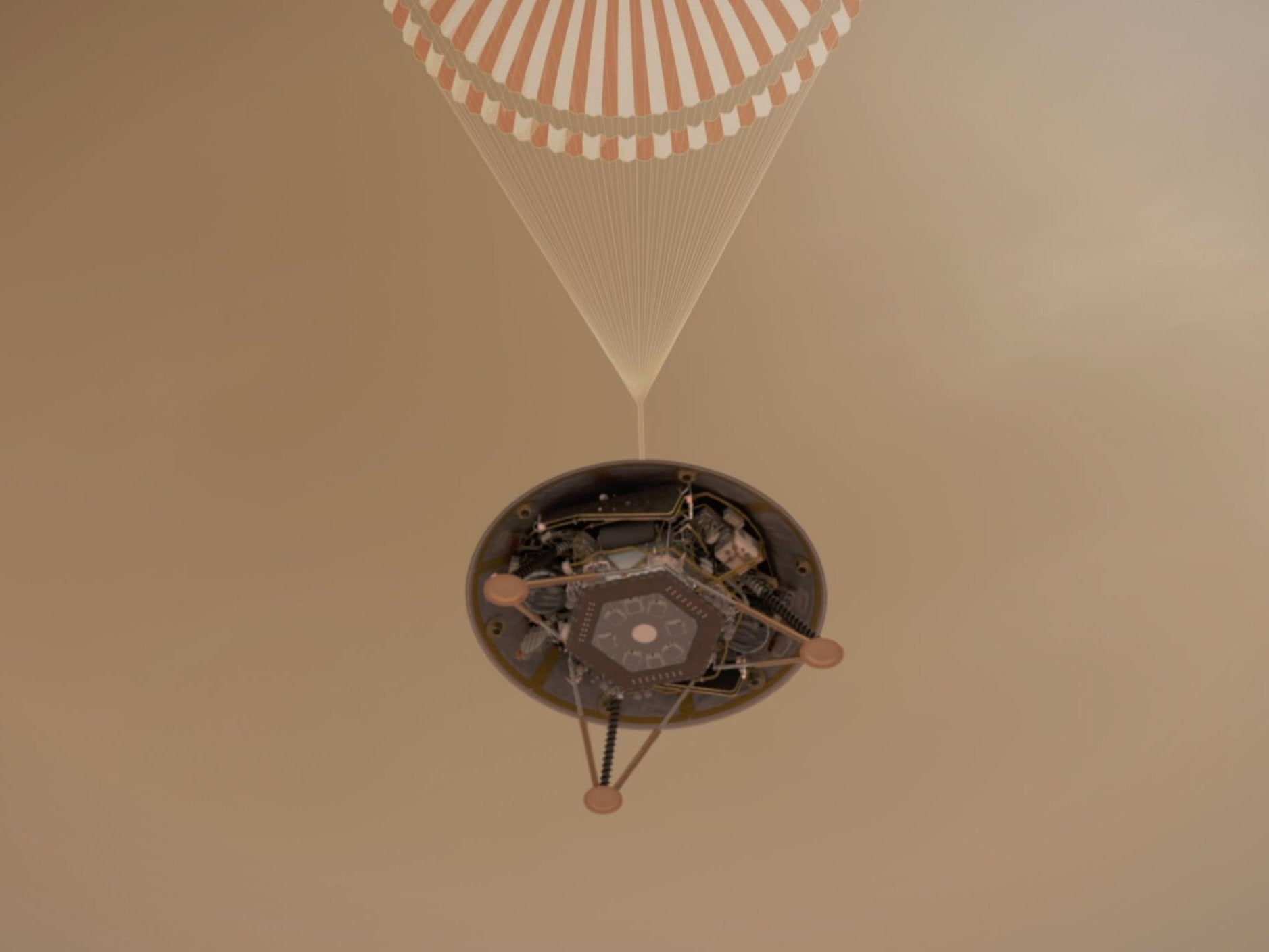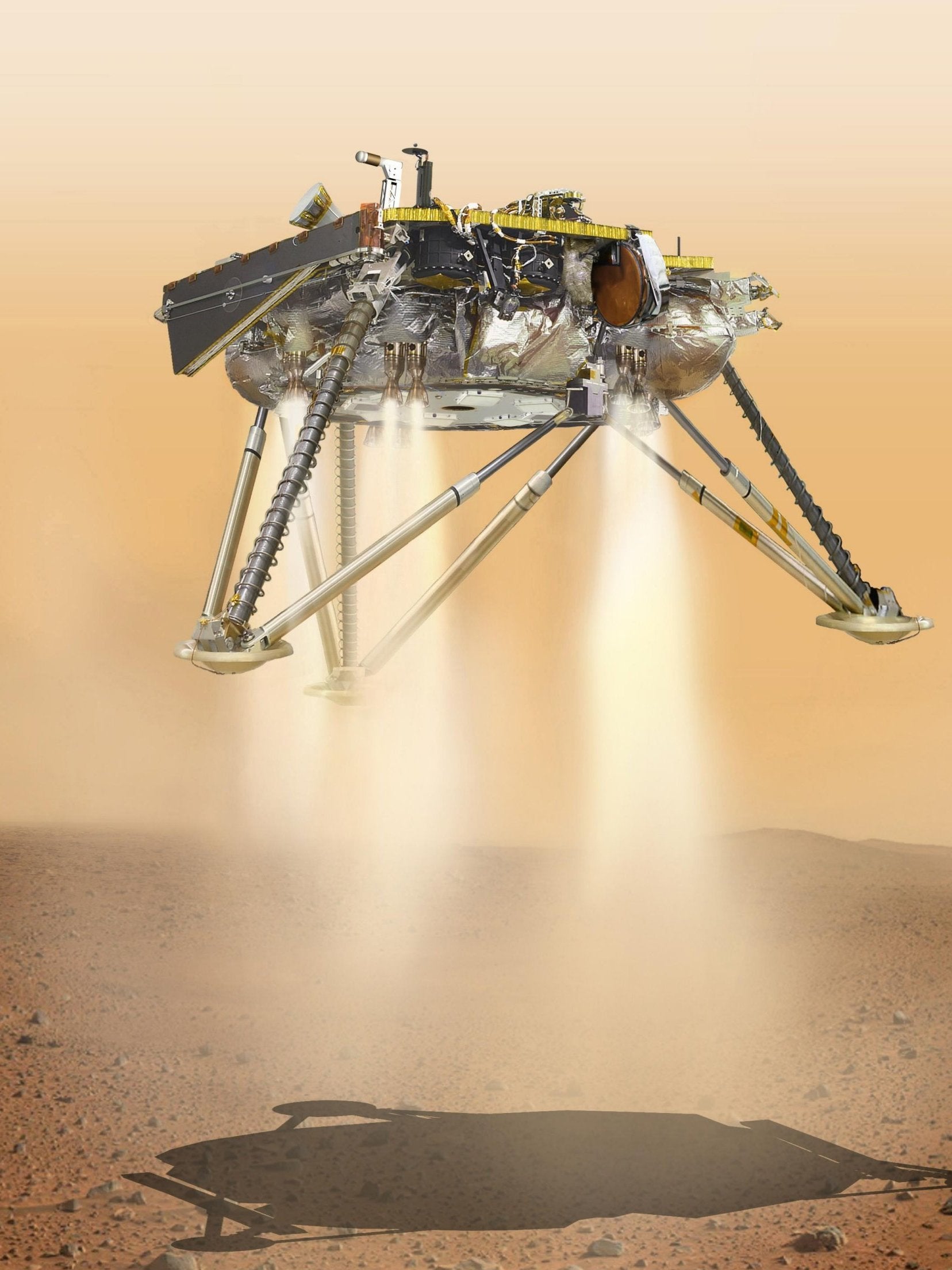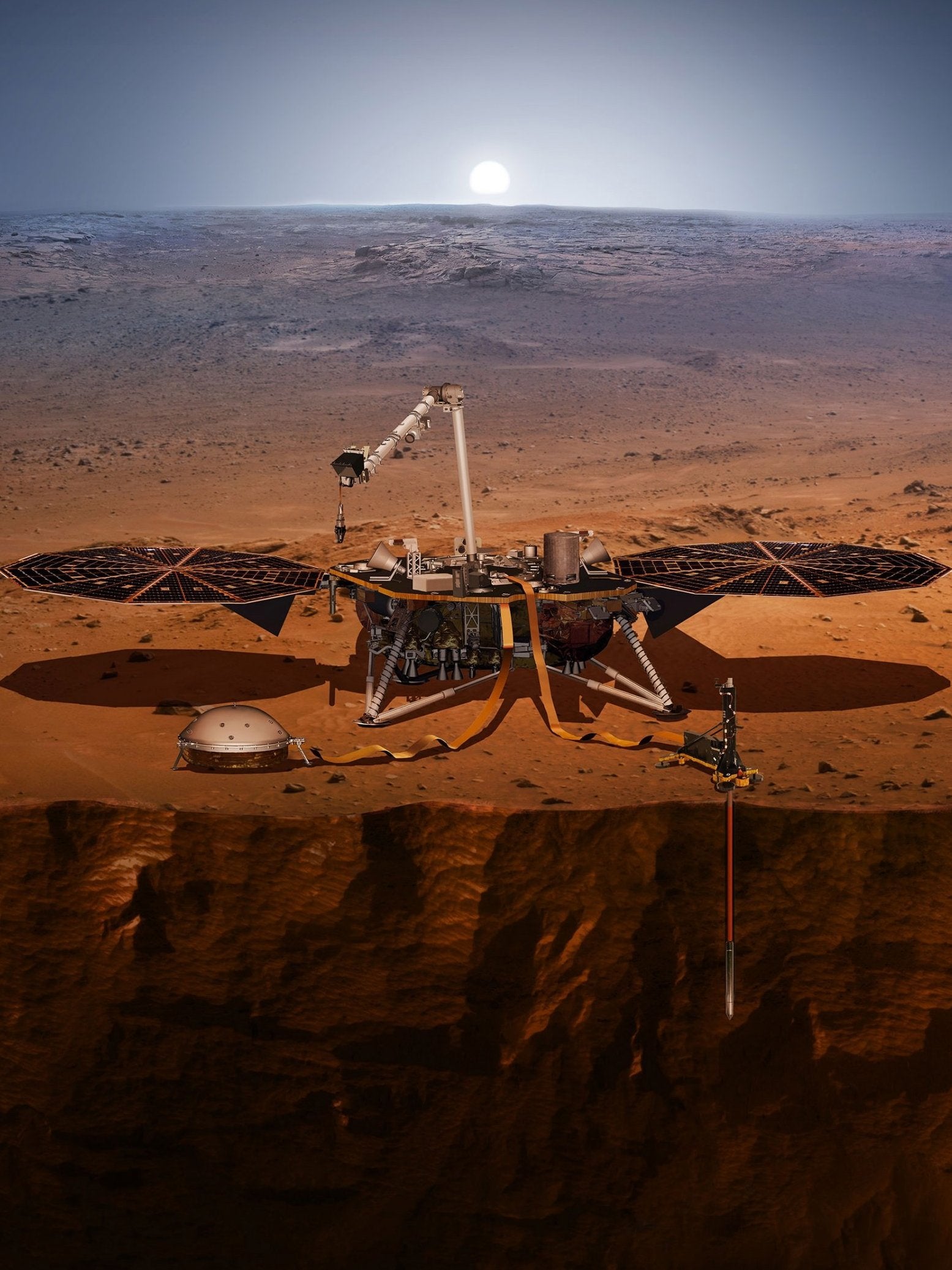Nasa Mars landing: InSight lander nears Red Planet for mission to examine how it formed
Lander is space agency's first attempt to land on Martian surface in six years
Nasa’s InSight lander is hurtling closer to Mars as it prepares to touchdown on the Red Planet after a six-month voyage through space.
Having travelled 301 million miles from Earth, the spacecraft was due to reach its destination on the dusty, rock-strewn surface around 3pm EST (8pm GMT).
InSight will need to go from 12,300mph to zero in six minutes as it pierces the Martian atmosphere, launches a giant parachute, blasts its descent engines and, if all goes well, lands on three legs.
The stationary probe, launched from California in May, will then pause for 16 minutes for the dust to settle around the landing site before its disc-shaped solar arrays unfurl to provide power.
Engineers at Nasa’s Jet Propulsion Laboratory (JPL) hope to get real-time electronic confirmation of the spacecraft’s safe arrival from miniature satellites launched along with InSight which will fly past Mars.
The JPL controllers also expect to receive a photo of the probe’s surroundings on the flat, smooth Martian plain close to the planet’s equator called the Elysium Planitia.
The site is roughly 373 miles from the 2012 landing spot of the car-sized Mars rover Curiosity, the last spacecraft sent to the Red Planet by Nasa.
The smaller, 880-pound (360kg) InSight – its name is short for Interior Exploration Using Seismic Investigations, Geodesy and Heat Transport – marks the 21st US-launched Martian exploration including the Mariner fly-by missions of the 1960s.
Nearly two dozen other Mars missions have been sent from other nations.

InSight is the first mission dedicated to unlocking secrets from deep below the Martian surface.
The lander will spend 24 months – around one Martian year – using seismic monitoring and underground drilling to gather clues on how Mars formed and, by extension, the origins of Earth and other rocky planets of the inner solar system more than four billion years ago.
While Earth’s tectonics and other forces have erased most evidence of its early history, much of Mars – which is about one-third the size of Earth – is believed to have remained largely static over the eons, creating a geologic time machine for scientists.

InSight’s primary instrument is a highly sensitive French-built seismometer, designed to detect the slightest vibrations from “marsquakes” and meteor impacts.
Scientists expect to see a dozen to 100 marsquakes over the course of the mission, producing data to help them deduce the size, density and composition of the planet.

The Viking probes of the mid-1970s were equipped with seismometers, but they were bolted on top the landers, a design that proved largely ineffective.
InSight is also fitted with a German-made drill to burrow as much as 16ft (5m) underground, pulling behind it a rope-like thermal probe to measure heat.

Meanwhile, a radio transmitter will send signals back to Earth, tracking Mars’ subtle rotational wobble to reveal the size of the planet’s core and possibly whether it remains molten.
The InSight and the agency’s next rover mission, along with others in the planning stage, are seen as precursors for eventual human exploration of Mars, Nasa officials have said.
Additional reporting by agencies
Join our commenting forum
Join thought-provoking conversations, follow other Independent readers and see their replies
Comments
Bookmark popover
Removed from bookmarks